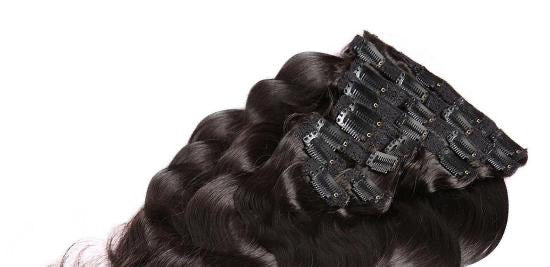Hand Tied Extensions: What Are They, Pros & Cons, and How To Maintain

In the ever-evolving world of beauty and fashion, the quest for luscious, voluminous locks has led to the emergence of various hair extension methods. Among the myriad of options available, hand-tied hair extensions have gained immense popularity for their natural look, versatility, and minimal damage to natural hair.
In this comprehensive guide, we'll delve into the fascinating realm of hand tied extensions, exploring their origin, application process, maintenance, and why they've become the go-to choice for many seeking the perfect mane makeover.
Hand tied extensions
The Origin Of Hand Tied Extensions
Hand tied hair extensions may be a modern beauty trend, but the idea of adding length and volume to hair has been around for thousands of years. The earliest recorded use of hair extensions dates back to Ancient Egypt, around 3400 BC.
In Ancient Egypt, thick, voluminous hair was a sign of social status. To achieve this, people would use braided sheep’s wool woven into their natural hair to create the appearance of longer, fuller locks. Wigs and extensions were commonly worn by both men and women, including Pharaohs, Queens, and politicians. They were often reserved for special occasions such as ceremonies and banquets.
Despite their ancient origins, hair extensions have transformed significantly over time. A key figure in modern extension history is Christina Jenkins, the inventor of the weave.
Born in Louisiana in 1920, Christina earned a degree in science before moving to Chicago, where she worked for a wig manufacturer. During this time, she realised that the traditional method of attaching weaves with pins was bulky and didn’t create a natural look. To solve this, she developed a weaving frame and cord technique that allowed for a more secure and seamless attachment.
Her innovation, later known as the “Hair-Weeve” technique, changed the industry by allowing women—particularly African-American women—to explore new, natural-looking hairstyles that were previously difficult to achieve. After receiving a patent, Christina travelled globally to teach her method before opening Christina’s HairWeeve Penthouse Salon, where she worked until the age of 72.
Building on these early advancements, hand tied weft extensions have emerged as a popular option for those seeking seamless, natural-looking hair. Unlike older methods, hand tied extensions are meticulously sewn onto a person’s natural hair, ensuring no bulk and no obvious hair extensions. This results in a lightweight, comfortable, and nearly invisible look, making it one of the most sought-after hair extension techniques today.
Cost of Hand-Tied Weft Hair Extensions
When considering hand tied hair extensions, several factors influence the overall cost. These include the quality of hair, the desired length and volume, the stylist’s expertise, and the location of the salon. Additionally, maintenance costs and aftercare products can add to the investment. Understanding these factors will help clients anticipate the financial commitment required for these extensions.
1. Quality and Type of Hair Used
The quality of hair used in weft hair extensions significantly impacts the price. Premium extensions that blend seamlessly with natural hair and maintain their durability in different climates are often more expensive. High-quality hair that requires minimal styling and upkeep provides a long-lasting and natural look, making it a worthwhile investment.
2. Desired Length and Volume
The more length and volume a client desires, the higher the cost of hand tied weft extensions. Longer extensions require more hair, which increases the price. Additionally, achieving a fuller, more natural appearance involves skilled craftsmanship, contributing to the overall cost.
3. Stylist’s Expertise and Experience
A highly experienced stylist specialising in hand tied extensions typically charges more due to their advanced skills. A professional stylist ensures the extensions are seamlessly blended, properly installed to avoid damage, and positioned to promote hair health. Clients often find that investing in an expert prevents future issues and extends the longevity of their extensions.
4. Geographic Location and Salon Pricing
Salon prices for hand tied hair extensions can vary greatly depending on location. In major cities, where demand is higher, prices are often steeper, while salons in suburban or rural areas may offer more affordable rates. Below is a general pricing breakdown based on location:
|
Location |
Standard Salon |
Premium Salon |
|
Metropolitan Area |
€230 - €370 |
€460 - €740 |
|
Suburban Area |
€180 - €320 |
€410 - €640 |
|
Rural Area |
€140 - €280 |
€370 - €600 |
5. Additional Maintenance Costs
Aside from the initial installation, hand tied extensions require regular maintenance, including moving them up every 6-8 weeks, which adds to the long-term cost. Clients must also invest in salon-quality hair products to maintain the integrity of their extensions.
Like any beauty investment, hair extensions pros and cons should be carefully considered. While hand tied weft extensions provide a natural, seamless look, they come with a higher cost and maintenance requirements. Clients should weigh these factors when deciding whether this extension method is the right choice for their lifestyle and budget.
Pros And Cons Of Hair Extensions
Hair tied extensions come in various pros and cons. Let’s first take a look at their advantages:
-
Natural Appearance: Hand tied extensions are renowned for their ability to mimic the movement and texture of natural hair. The seamless blending with the existing hair creates an undetectable finish, making it challenging for onlookers to distinguish between natural and extended strands.
-
Comfort and Flexibility: The hand-tying technique distributes the weight of the extensions evenly across the scalp, reducing tension and discomfort. This results in more comfortable and flexible wear, allowing individuals to enjoy their newfound length and volume without the constant awareness of added weight.
-
Versatility in Styling: Hand tied extensions offer unparalleled versatility when it comes to styling. Whether it's curls, waves, or sleek straight looks, these extensions seamlessly integrate with natural hair, providing endless possibilities for creative hairstyling.
-
Minimal Damage: Unlike some traditional extension methods that involve harsh adhesives or heat, hand tied extensions are known for their gentle application process. This minimises the risk of damage to natural hair, making them a suitable choice for those who prioritise the health and integrity of their locks.
With all the benefits mentioned, hand tied extensions are worth considering. Yet, they have opposite sides, including:
-
Cost: The initial installation can cost over $1,000 and take several hours. Moreover, regular maintenance is required, as the extensions need to be moved up every 6–8 weeks.
-
Maintenance: Daily brushing is essential to prevent tangling and keep the extensions looking fresh. Furthermore, the attachment area must be dried thoroughly after washing to avoid mould or knotting. With obvious hair extensions, you can expect frequent salon visits to maintain the look and health of your extensions.
-
Not For Curly Hair: Hand tied extensions may not be ideal for those with coily or very curly hair, as blending can be difficult.
-
Weight: They can feel heavy and might not be comfortable for people with sensitive scalps.
-
Hard To Brush: The attachment area is thicker than other types of extensions, making it harder to brush through.
See more: How To Blend Curly Hair Extensions: A Complete Guide
Application Process
One of the standout features of hand tied extensions lies in the application process. Skilled hairstylists meticulously attach small wefts of hair to tiny sections of the natural hair, using a specialised hand-tying technique. This process allows for a more customised and discreet application, resulting in a seamless integration with the existing hair.
The hand-tying method involves creating a "track" using a beaded row technique. Small sections of natural hair are threaded through microbeads, forming a foundation for attaching the hand-tied wefts.
The hand tied weft extensions are then sewn onto the track, ensuring a secure and long-lasting attachment. The meticulous craftsmanship involved in this process contributes to the extensions' natural movement and undetectable appearance.
Do Hand-Tied Extensions Work Well With All Hair Types?
Hand tied weft extensions can work well with many hair types, including fine, thick, curly, and straight hair. They also blend with different hair lengths, making them a versatile choice. However, proper application and customisation are key to achieving a natural look without obvious hair extensions.
-
Fine Hair: Since hand tied weft extensions are lightweight, they won’t put too much strain on delicate hair, reducing the risk of damage or breakage.
-
Thick Hair: These extensions can be layered to add volume and length, creating a full and seamless look.
-
Curly Hair: Extensions can be customised to match your natural curl pattern, ensuring they blend smoothly and maintain a cohesive style.
While hand tied extensions are suitable for many hair types, proper installation by an experienced stylist is essential to achieve a natural, undetectable finish.
Frequently Asked Questions
How Long Do Hand-Tied Extensions Last?
Hand tied weft extensions typically last 6 to 8 weeks before needing maintenance. However, with proper care, the actual hair can last 6 to 12 months and be reused multiple times. Regular salon visits are necessary to move the extensions up as natural hair grows.
What Are the Cons of Hand-Tied Extensions?
While hand tied extensions offer a natural look, they come with some drawbacks. The installation process is expensive and time-consuming, often costing over €500 and taking several hours. They require regular upkeep every 6-8 weeks and daily brushing to prevent tangling. Some people find them heavy or uncomfortable, especially if they have a sensitive scalp. Styling can also be limited, as high ponytails or tight updos may reveal the wefts, making them look like obvious hair extensions.
How Much Do Hand-Tied Extensions Cost?
The cost of hand tied weft extensions depends on the hair quality, length, stylist expertise, and location. On average, installation costs range from €200 to €800, with premium salons charging even more. Maintenance appointments every 6-8 weeks can add €100 to €300 per session. Additional expenses include special shampoos, conditioners, and styling products to keep the extensions in good condition.
What Is the Best Hand-Tied Extension Method?
The best hand tied extension method depends on hair type, lifestyle, and desired look. The beaded row method is one of the most popular, as it involves sewing hand tied weft extensions onto small beads attached to the natural hair, creating a secure and natural look without glue or tape. This method reduces damage, works well for fine to thick hair, and allows for easy maintenance.







Comments